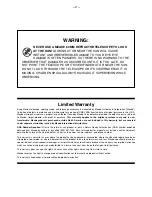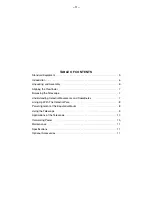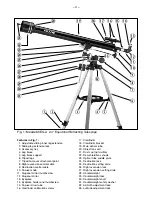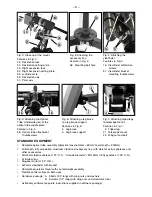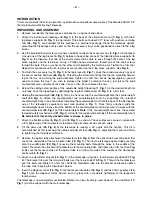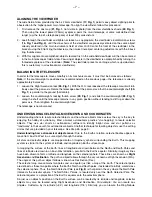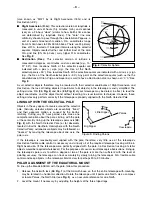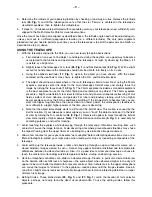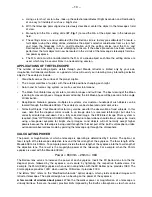
– 11 –
seen well at a given power. The most often useful higher magnification with any 60mm diameter telescope
is in the range of 80 to 120 power. The general rule to follow with any telescope, regarding power: Only use
as much magnification as supports a steady, well-defined image. This often varies with the stability of the air
being viewed through and is one reason why having various eyepieces is highly desirable. Higher powers
are no guaranty of better images; in fact, the opposite is often true. Also, keep in mind, that land viewing and
wide-field, deep-space observation are low power applications of your telescope.
MAINTENANCE
As with any quality optical instrument, lens surfaces should be cleaned as infrequently as possible. A little
dust on the surface of the objective (front) lens causes negligible degradation of image quality and should
not be considered reason to “clean” the lens. When lens cleaning does become necessary, use a camel’s
hair brush or compressed air blown gently to remove dust. Wipe only with a soft, clean cloth, applying as
little pressure as possible to avoid scratching glass surfaces.
Note: Remove the dew shield/lens shade (22,
Fig. 1) to access the objective lens (20, Fig. 1) for cleaning.
SPECIFICATIONS
Focal Length . . . . . . . . . . . . . . . . . . . . . . . . . . . . . . . .900mm
Aperture (Diameter) . . . . . . . . . . . . . . . . . . . . . .60mm (2.4”)
Eyepieces: . . . . . . . . . . . . . . . . . . . . . .MA 25mm, MH 9mm
f/ratio . . . . . . . . . . . . . . . . . . . . . . . . . . . . . . . . . . . . . . . . .f/15
Mounting Type . . . . . . . . . . . . . . . . . . . . . . . . . . . .Equatorial
OPTIONAL ACCESSORIES
See your Meade or full-service Meade dealer for further details on any of these accessories.
#928 45° Erecting Prism (1.25 O.D.): Correctly orients the telescopic image during terrestrial observing and
yields an image position at a 45° angle to the main telescope tube, resulting in a more comfortable observing
position in most cases.
Additional Eyepieces (1.25" barrel diameter): For higher or lower magnifications with the telescopes that
accommodate 1.25" eyepieces, Meade 3-element Modified Achromatic eyepieces, available in focal lengths
of various sizes, provide a high level of image resolution and color correction at an economical price. Also,
at slightly higher prices, Meade 4-element Series 3000 Plössl eyepieces yield wider fields of view with
excellent edge-of-field corrections and are available in a range of focal lengths including 5, 6.7, 9.5, 16, 25,
and 40mm.
Basic Camera Adapter (1.25” O.D.): Permits direct attachment of 35mm SLR cameras to the telescope.
(Requires T-Mount for your specific brand of camera). Suitable for lunar disk and land photography.
Summary of Contents for 60EQ-A
Page 12: ......


